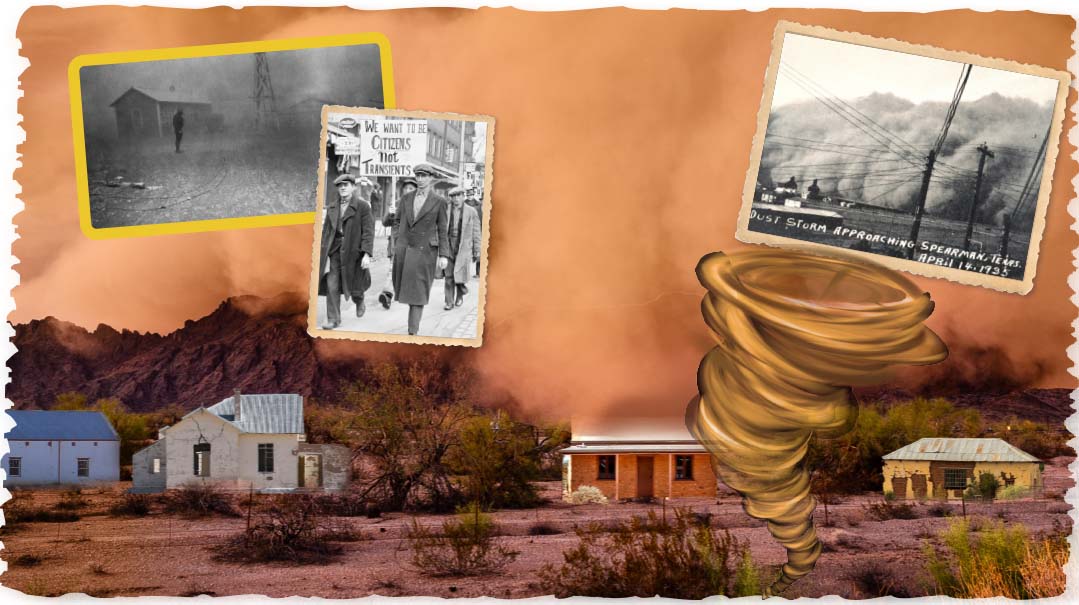The Dust Bowl
| October 12, 2021When dirt fell from the sky

1935
The big cloud overhead looked threatening. Frances tugged at her father’s sleeve. “Papa, Papa, look at that!” she said, pointing.
Her father put down his hoe and gazed up at the sky, worried. “That’s not rain! Oh no! Another dust storm is coming!”
Quickly, the family sprang into action. They hurriedly brought all the animals inside the house. They stuffed sheets into the cracks in the walls. They covered the well with a big stone. Then, they huddled inside the house, damp rags covering their mouths and noses, as the dust storm rolled into town, covering the streets with darkness.
An Appropriate Nickname
On April 14, 1935, Colorado, Kansas, and the panhandle of Oklahoma, otherwise known as the Great Plains, were given an interesting nickname.
It was after a massive storm where the winds blew harder than 60 miles per hour. Reporters all wrote about it, and one came up with the nickname that stuck immediately: The Dust Bowl.
Most of us are familiar with dust, the substance that we find on top of bookshelves or in old attics. But for the residents of the Dust Bowl… dust was their daily routine.
For close to ten years, instead of rain falling from the sky to water their plants and grow their crops, dust swept through the towns, destroying the crops and getting into all their belongings.
But where did all this dust come from?
And why didn’t it rain?
That area, the Central Southern region of the United States, was famous for its crops. Most of the wheat that the United States produced came from there. For years, the farmers toiled hard on their farms — and they got results. Although there were occasional droughts and plagues of grasshoppers, for the most part, they made enough money to feed their families. Some even became wealthy from their efforts and developed big plantations.
So what changed?
Oops! We could not locate your form.






